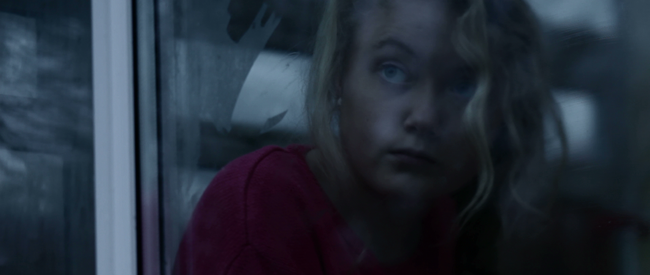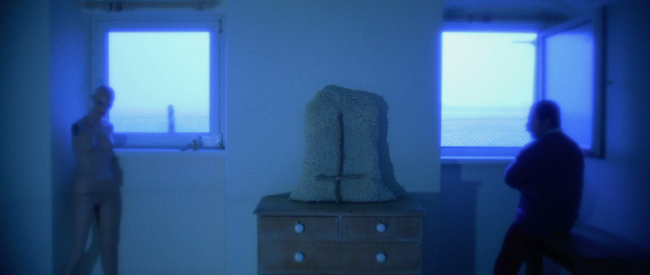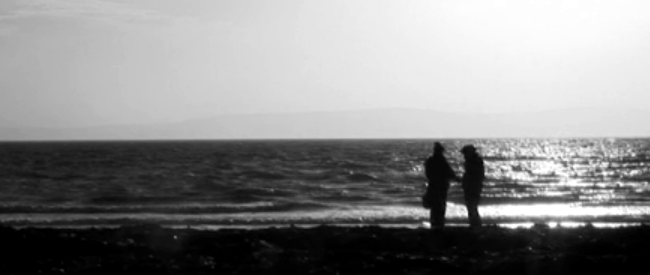THURSDAY, NOVEMBER 7th – 7:30PM & 10PM
THURSDAY, NOVEMBER 21st – 7:30PM & 10PM
THURSDAY, DECEMBER 5th – 7:30PM & 10PM
(Detailed synopses below)
Irish cinema has never been renowned for harboring a vibrant underground or experimental film scene. There have been significant exceptions (most importantly, aspects of the Irish “First Wave” of the 1970s), but it’s only in recent years that a body of films has emerged that offer a powerful rebuttal to that perception. While to announce a fully-fledged “movement” would be premature, it is safe to say that the work of the four filmmakers featured in this series – Rouzbeh Rashidi, Maximilian Le Cain, Dean Kavanagh and Michael Higgins – represent an important new direction in Irish cinema.
Working with minimal and usually non-existent budgets, primarily on video, with zero crew and casts typically drawn from friends and family, all four filmmakers have been developing at a prolific rate over the past few years. Between them, they have produced 32 features since 2008 – though it must be admitted Rashidi, who in 2012 alone directed 9 features and 76 short films, has been the most insanely fertile contributor. All the filmmakers are members of the Experimental Film Society, an international organization founded by Rashidi aiming “to produce and promote films by its members” who are “distinguished by an uncompromising, no-budget devotion to personal, experimental cinema.” As this series will make clear, they have also been known to appear in each other’s films, and even collaborate on film projects together from time to time. (Strangely enough, Rashidi, Le Cain and Kavanagh have even released three albums of sound art together, under the collective moniker “Cinema Cyanide”.)
For the most part, the films operate in an uncanny space between experimental and narrative film. On the one hand, generally eschewing plot and any conventional notion of “eventfulness” in favor of the immediate sensuousness of images and sounds and their juxtaposition – on the other hand, using performers, locations, lighting and sound design to evoke affects and atmospheres more readily associated with genre cinema, especially the horror film. Le Cain, also an accomplished critic, once wrote about David Lynch that he “frees the paranoia of noir from the straightjacket of narrative … [drowning] the plot in a great tidal wave of emotion”, and one can identify a similar impulse at work across many of these films. Le Cain adds that “the most unsettling aspect of [Lynch’s work] is that the fear seems to come from a source that is deeper than the plot indicates.”
It’s this deeper level that these filmmakers mostly concern themselves with. As the title of the opening film, There is No Escape from the Terrors of the Mind (2013), makes explicit, the unease evoked is existential rather than circumstantial: it’s much more about the nature of perception, memory and consciousness than anything that can be resolved, or even expressed, through action or dialogue. Usually forsaking plot entirely to tackle these depths head-on, the films mostly seem to reside in a strange, subterranean world free of the typical “narrative” trappings of our daily life. Jobs, money, the State, even social interaction, are rarely visible. Instead, there are bodies and there are spaces, there are sensations and there are memories, and there is the coming-into-being and intermingling of each of these through processes of perception (and cinema).
When language is foregrounded in these worlds – for example, in Higgins’ Birds on a Wire (2011) or Rashidi’s Bipedality (2010) – it is usually fragile and woefully insufficient. Le Cain has described Bipedality as one of Rashidi’s last films to feature extensive dialogues, as a study of “how inadequate language is to communicate feeling, or to grapple with the mysteries of existing in any given moment in relation to another person or simply to the world that surrounds one”, a world that is, in contrast, “almost overwhelmingly vivid and sensuous.” It’s our primal and problematic relationship to the world in this sense, that each of these filmmakers focus on in different ways: not the world before the Word (in the sense of Brakhage’s “untutored eye”) so much as a world beneath the Word, a subterranean field of sensations that is always available to us but which we can rarely share or articulate in social or verbal terms.
Although it’s worth thinking through the question of whether this aesthetic direction is ultimately limited by its rejection of social or political contingencies and distrust of verbal expression, Le Cain’s thoughts on Rashidi make an opposing case that could apply to all four filmmakers: “He is not interested in cinema as arecord or replication of communication, but in what cinema can itself best communicate through sound and image. … He is concerned with the intensely private experiences of perception that perhaps cinema alone has the tools to communicate adequately.”
Or put another way, we could pick up the idea of filmmakers Graeme Thomson and Silvia Maglioni from their recent film In Search of Uiq (2013) that, “In our universe, we are tuned to the frequency that corresponds to the reality of capitalism … An infinite number of parallel realities coexist with us in the same room, although we cannot tune into them.” At their best, Rashidi, LeCain, Kavanagh and Higgins have found ways to tune into some of those other frequencies, and now invite us to join them.
Programmed by Donal Foreman, with special thanks to the Experimental Film Society.
For more information please visit: www.experimentalfilmsociety.com, www.rouzbehrashidi.com, www.maximilianlecain.com, www.deankavanagh.com, and www.mgmh.me.
THURSDAY NOVEMBER 7th – 7:30PM
HSP: THERE IS NO ESCAPE FROM THE TERRORS OF THE MIND
(Rouzbeh Rashidi, 120mins, 2013)
“HSP: There Is No Escape From The Terrors Of The Mind consists of three medium length instalments of an ongoing film project by Rashidi, Homo Sapiens Project. These instalments, when watched back-to-back, will function as a single film structured in episodes. A mysterious loner, perhaps a poet, journeys through a series of uncanny surrealistic landscapes with an unclear purpose. His adventure is divided into three sections. The main theme of this experiment is to compare the eerier qualities of different landscapes and interpose the characters within them, elaborating the project’s ongoing preoccupation with extracting sinister moods from ordinary settings. In a way, these can be seen as experimental horror films in which an atmosphere of dread is evoked and sustained without the expected narrative trappings.” – Rashidi
THURSDAY NOVEMBER 7th – 10PM
BIPEDALITY (Rouzbeh Rashidi, 68mins, 2010)
“It is rare and thrilling to encounter a film that seems to pre-exist the viewer’s presence, one which pitches the audience into a disturbingly private universe and trusts it to find its bearings within an alien environment that belongs more to the characters than the spectator. There is no better example of this than Rouzbeh Rashidi’s magnificent and profoundly mysterious new underground feature Bipedality (2010). A two-hander focusing exclusively on a young couple played by Dean Kavanagh and Julia Gelezova, it troublingly articulates the way in which two people, even while sharing an intimate relationship, can remain mysterious to each other- and perhaps also to themselves.” – Le Cain
THURSDAY, NOVEMBER 21st – 7:30PM
A HARBOUR TOWN (Dean Kavanagh, 92mins, 2013)
“A young girl lives with her brother in a small cottage in the countryside. In the city a Health Inspector explores an abandoned building. It is unclear what has happened but it is evident that there have been environmental changes. A terrible sense of dread ensues and separates the brother and sister. The brother continues with his mundane chores in isolation, while the young girl drifts further away into the depths of a large rotting forest where she eventually disappears.” – Kavanagh
“Based in a small town in Co. Wicklow, working alone, without budgets and with casts more often than not drawn from his family, Kavanagh is a melancholy visionary of brooding isolation. His obscure narratives tend to focus either on the private rituals of home life or mysterious journeys to or from ‘home’, to or from memory…. His is unquestionably a cinema of contemplation: places, objects, faces, atmospheres and their immediate emotional charge are his stock in trade. Rather than telling stories in any traditional sense, his best films generate a slow, throbbing ache that invades and haunts his viewers. His world is rainswept, claustrophobic, fixated on details, with even his urban images steeped in rural gloom.” – Le Cain
THURSDAY, NOVEMBER 21st – 10pm
SHORT FILMS: MAXIMILIAN LE CAIN & VICKY LANGAN (60mins)
Since 2010, sound/performance artist Vicky Langan (aka Wölflinge) and experimental filmmaker Maximilian Le Cain have been working together in a unique creative audio-visual partnership. This is built on the strikingly fitting match between Langan’s magnetic, often troublingly intense presence as a performer and Le Cain’s distinctively jarring, disruptive visual rhythms. So far, they have completed eight moving image works together, six of which are presented in this program:
CONTACT (2011, 3 mins) uses Super-8 elements in constructing a dialectical relationship between film image and material.
WOLFLINGE 17/11/’10 (2011, 8 mins) is a haunting visual interpretation of a performance by Langan that breaks down the boundaries between spectator and performer.
LIGHT/SOUND (2010, 9 mins), their first video, acclaimed by critic Fergus Daly as one of the top ten films of 2010 in the Senses of Cinema magazine end of year poll, was chosen for distribution by Paris-based experimental film cooperative Collectif Jeune Cinéma.
HEREUNDER (2011, 12 mins) is an intense, fragmented (auto)biographical portrait of Vicky, which sets her adrift amidst lockers of garden shed bric-a-brac from which she summons an ocean of sound.
DESK 13 (2011, 8 mins) brings a darker, more erotic aspect of their vision to the fore.
DIRT (2012, 12 mins) is a phantasmagoric mélange of live performances and elements of gothic horror, resulting in a haunting, intense and sometimes humorous portrait of Wölflinge.
THURSDAY, DECEMBER 5th – 7.30pm
HISTORY OF WATER (Dean Kavanagh, 62mins, 2012)
BIRDS ON A WIRE (Michael Higgins, 63mins, 2011)
This double bill of hour-long pieces by Dean Kavanagh and Michael Higgins are perhaps the most identifiably Irish films in the season, focused as they are on the texture of rural landscapes and atmospheres.
Kavanagh’s first long-form work, History of Water, draws tremendous visual power out of a limited series of characters and spaces around his family home and native town of Greystones, Co. Wicklow.
The minimal and even hermetic scope of the film is countered by consistently rich and sensuous imagery in which local weather plays an evocative part. The underlying unease which is developed and at times becomes overwhelming, is hinted at in Kavanagh’s own synopsis of the film, which seems to function both as a description of the film’s narrative and its production: “A young man films his family to better understand them. As a result he becomes destroyed by them.”
On the other hand, Michael Higgins’ Birds on a Wire, the third film in his “road movie trilogy”, takes a paradoxically austere and static approach to a touristic journey along Ireland’s west coast. Two Polish women “experience both Ireland’s mythical history and contemporary weather patterns”, through a series of mostly distanced black and white tableaus, emphasizing the interplay of bodies, earth, weather and the flow of time much more than any contextual specifics of geography or personality.
THURSDAY, DECEMBER 5th – 10pm
WEIRD WEIRD MOVIE KIDS DO NOT WATCH THE MOVIE
(Maximilian Le Cain / Rouzbeh Rashidi, 80mins, 2013)
Weird Weird Movie Kids Do Not Watch The Movie is the second collaborative feature film between Rouzbeh Rashidi and Maximilian Le Cain. This hypnotic, visually and sonically immersive exploration of a haunted space unfolds in two parts. In the first, a woman (Eadaoin O’Donoghue) dissolves her identity into the ghostly resonances she finds in the rooms and corridors of a sprawling, atmospheric seaside basement property. In the second, a man (Rashidi), existing in a parallel dimension of the same space, pursues a bizarre and perverse amorous obsession.



